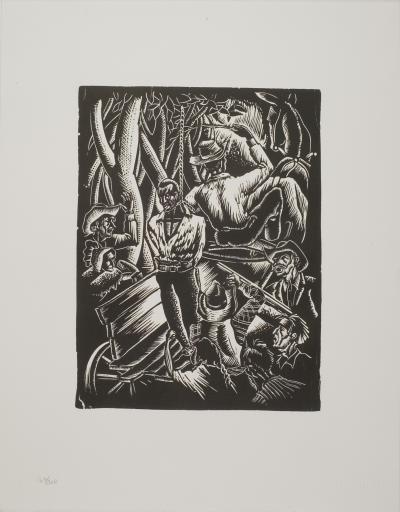Giddap, Hale Aspacio Woodruff
Artwork Overview
Hale Aspacio Woodruff, artist
1900–1980
Giddap,
1935
Portfolio/Series title: The Hale Woodruff Collection: Selections from the Atlanta Period
Where object was made: United States
Material/technique: linocut
Dimensions:
Image Dimensions Height/Width (Height x Width): 305 x 232 mm
Image Dimensions Height/Width (Height x Width): 12 x 9 1/8 in
Sheet/Paper Dimensions (Height x Width): 487 x 381 mm
Sheet/Paper Dimensions (Height x Width): 19 3/16 x 15 in
Mat Dimensions (Height x Width): 20 x 16 in
Image Dimensions Height/Width (Height x Width): 305 x 232 mm
Image Dimensions Height/Width (Height x Width): 12 x 9 1/8 in
Sheet/Paper Dimensions (Height x Width): 487 x 381 mm
Sheet/Paper Dimensions (Height x Width): 19 3/16 x 15 in
Mat Dimensions (Height x Width): 20 x 16 in
Credit line: Museum purchase: Gift of Roger A. and Annette Shoemaker Rieger
Accession number: 2004.0176.06
Not on display
If you wish to reproduce this image, please submit an image request



